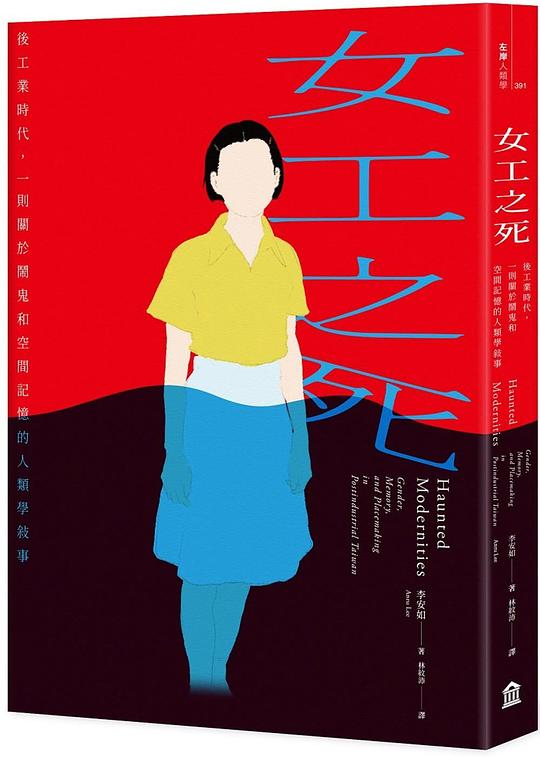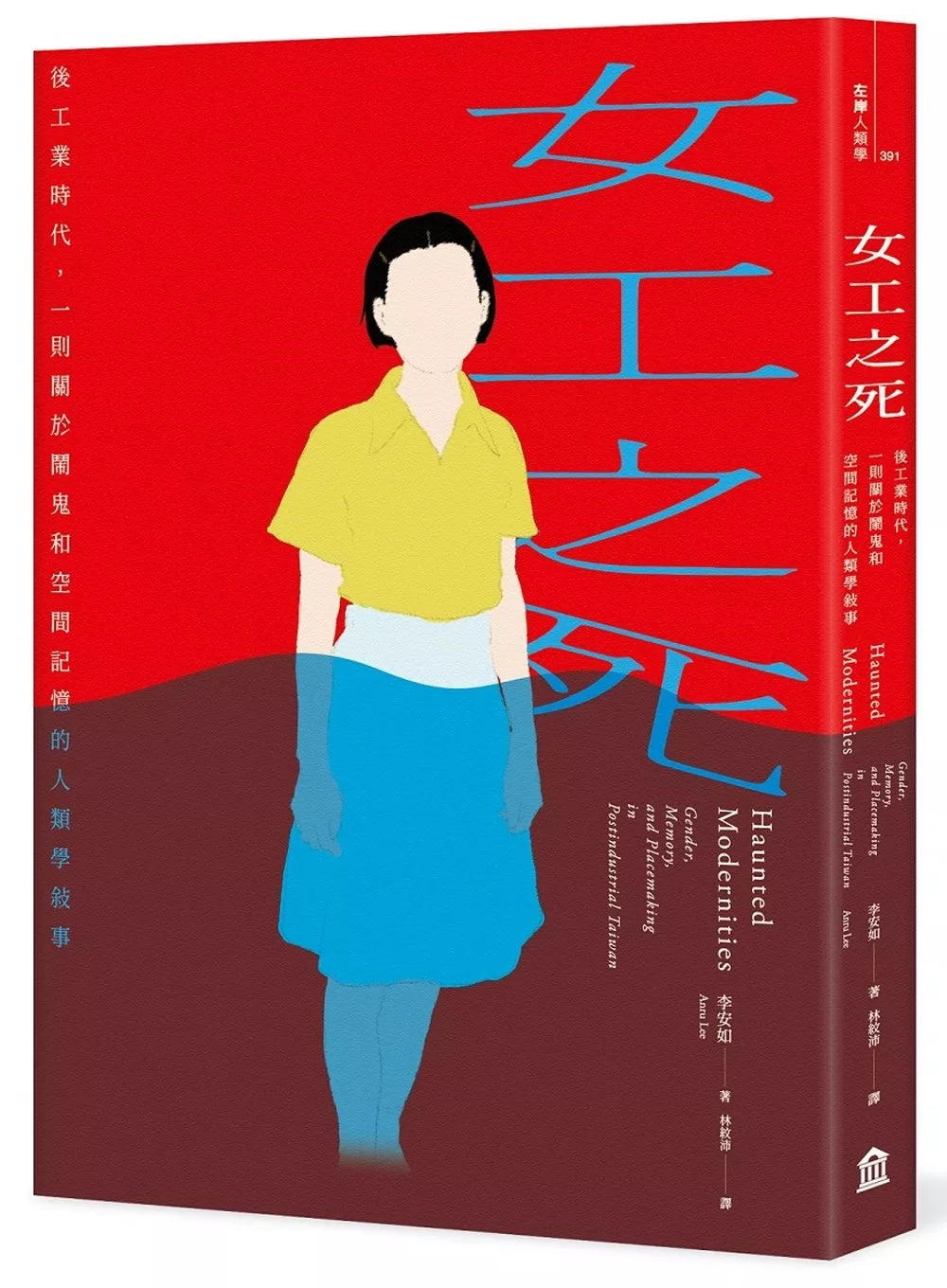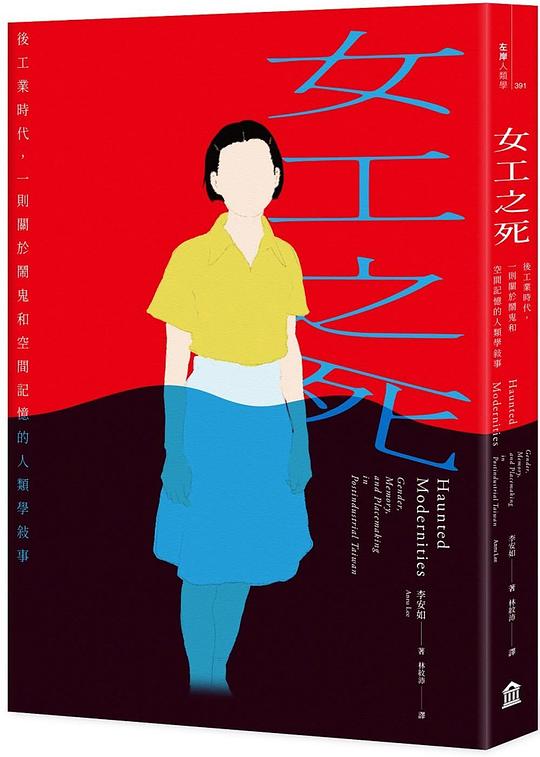1
/
of
2
The Death of a Female Worker: An Anthropological Narrative of Hauntings and Spatial Memory in the Post-Industrial Era
The Death of a Female Worker: An Anthropological Narrative of Hauntings and Spatial Memory in the Post-Industrial Era
Li Anru Lin Wenpei 译
Regular price
$26.99 USD
Regular price
Sale price
$26.99 USD
Unit price
/
per
Low stock
Couldn't load pickup availability
About Book
About Book
Haunted Modernities: Gender, Memory, and Placemaking in Postindustrial Taiwan
An anthropological study of ghosts: It is precisely those ghosts that have been silenced or disappeared that allow us to begin to re-understand history.On the morning of September 3, 1973, at the Zhongzhou Pier in Cijin, a group of men and women, eager to work in the Kaohsiung Export Processing Zone, crowded onto the ferry "High School No. 6" bound for Qianzhen, Kaohsiung. While this type of private ferry typically carries no more than 10 people, this one, crammed with over 70, capsized and sank. Twenty-five women, aged between 13 and 30, tragically drowned. The families of the victims and the Kaohsiung City Government decided to bury the women together in a collective burial area known as the "Twenty-Five Ladies' Tomb." Folklore holds that unmarried women become homeless ghosts after death. Rumors of ghosts haunting the Tomb of the Twenty-Five Ladies, searching for their husbands, led people to avoid the area. The young female worker who died that year also bore the stigma of a ghost.
In 2008, at the urging of local women's rights groups, the Kaohsiung City Government rehabilitated the "Twenty-Five Ladies' Tomb" and officially renamed it the "Working Women's Memorial Park." The 25 young women who tragically drowned on their way to work that year were positioned as "working girl heroes who fought for Taiwan's economic development in the 1960s," promoting gender equality and labor safety issues.
Why were the ferry victims initially buried together? Why, after all these years, were their remains exhumed and their resting place meticulously restored? How did their lives and deaths impact those around them? How did the surrounding community form a shared memory of the deceased? How do these memories connect to the past, present, and future?
+++++
Memory is never just about the past; the construction of memory is always a process oriented towards the future.
Three forces were directly involved in the transformation of the Cijin Twenty-Five Ladies' Tomb: the families of the deceased women, Taiwanese feminist groups, and the Kaohsiung City Government, acting as a national agent. Each embodied a particular relationship between the living and the deceased. Seeking to sever the connection between their daughter's unmarried status and the image of a female ghost, the victims' parents sought the influence of Taiwanese folk religion, elevating their daughter's afterlife from a ghost to a deity. Conversely, feminist groups in Kaohsiung worked to destigmatize the stigma of unmarried female ghosts. They organized a social movement promoting the deceased women as valuable members of the industrial workforce, who had made significant contributions to the nation's economic development. They also called on the government to improve the environment of the collective burial site to commemorate their contributions. As for the Kaohsiung City Government, local officials realized that, in the changing global economic environment, Kaohsiung's urban economy could no longer rely on traditional industrial sectors. Responding to the call of feminists to commemorate the victims, they transformed the cemetery of the 25 women who died in the Cijin ferry disaster into a recreational memorial park as part of the city's post-industrial transformation. This initiative transformed the ghosts of the deceased young workers into a new symbol, representing Kaohsiung's new, forward-looking and progressive identity.
The Death of a Female Worker is divided into three parts and eight chapters. The first part, "Origin: The Lost," describes the events of the ferry accident, the subsequent handling by all parties, and the economic development context of Taiwan at the time, exploring the memorialization methods of various parties based on different contexts and purposes. The second part, "Ghost Landscape," contains four chapters. In the form of ethnography, it interprets the memory landscape of the Twenty-Five Ladies' Tomb, how it is closely connected to local, national, and even global memorial scales, and what kind of disputes such local memory practices have caused within the same scale and between different scales. The third part, "Afterlife," explores how the focus of the word "memory" has shifted from "place" to "action," focusing not on the place of commemoration, but on the process of commemoration.
Anthropologists use the story of the Twenty-Five Ladies' Tomb as a core to explore the shifting public narratives of the roles of female workers in post-industrial Taiwan. The book explores topics such as religious anthropology, ghost and spirit studies, women's labor history, memory and memorialization, urban studies, and placemaking, thereby analyzing the nature of public expressions of history, collective emotions, and memory, and how these fields are interconnected and intertwined. The book also explores the interplay between ghost and memory, and how ghostly apparitions can infuse complex emotions and experiences of loss, dispossession, regret, remorse, and injustice into the vocabulary of memorials, monuments, and everyday life.
“‘Haunted’ places are where memories from another perspective find voice. People often think of ghosts as a way to connect to the past. However, the past is only a prelude. What is truly important is not what we remember or forget, but how and why specific meanings are incorporated, institutionalized, or transformed in order to manage or feed the masses. Conversely, this also represents the ability of this same group of people to unlock these memories, to contest, appropriate, and intervene in them.” - Chapter 1, The Death of a Female Worker
This book touches on the question of spatial justice: in the transformation of cemeteries into parks, whose perspectives are foregrounded, and whose voices are ignored? These ghosts linger not only because they exist within certain cultural universes, but also because they represent voices and memories excluded from mainstream narratives. The three universes presented in the book—traditional Han culture, feminism, and national modernization—each with its own distinct perspectives on time and space, weave a complex story about how urban history is remembered, narrated, and reshaped. These universes usually exist in parallel, but when they meet, collide, and compromise for some reason (such as the reconstruction of the "Twenty-Five Ladies' Tomb"), we witness a profound debate about the right to interpret history and see the significance of urban space as a cultural battlefield. -- Fang Yijie, book recommendation
Recommender
Fang Yijie, Associate Professor Wang Xiuyun, Institute of Anthropology, National Tsing Hua University; Wang Meixiang, Professor of Humanities and Social Medicine, Faculty of Medicine, National Cheng Kung University; Lin Wei-pin, Associate Professor of Sociology, National Sun Yat-sen University; Fan Qing, Professor of Anthropology, National Taiwan University; Chen Meihua, Co-curator of "Women's Footprints" and Advisor to the Taiwan Women's Imaging Society; Huang Changling, Professor of Sociology and Dean of the College of Social Sciences, National Sun Yat-sen University; Huang Jie, Professor of Political Science, National Taiwan University; Legislator
The 25 young, unmarried women who died in a ferry disaster in 1973 are the tragic protagonists of countless bereavement tragedies, the subject of folk ghost stories, the martyrs of national industrialization, and the victims of feminist critiques of patriarchal oppression. The author presents a complex and multifaceted history that leaves readers unable to stop reading. —Wang Xiuyun
A sunken ferry took the lives of 25 young female workers and left a lingering shadow on the city. "Death of Female Workers" takes us into this forgotten and misunderstood history, charting how the lives and deaths of 25 young female workers were reinterpreted by their parents, local communities, feminists, and the nation. Drawing from real history, this book intricately interweaves women's labor history, ghost studies, memory politics, and spatial governance. Anthropologist Li Anru offers a profound portrayal and reflection on Taiwan's post-industrial landscape, and a deeply insightful theoretical dialogue on gender and memorialization practices in an Asian context. Her meticulous anthropological writing invites us to consider: How do we remember these women? And from whose perspective do we remember them? This is not just a book about tragedy, but also a book of memory for the future.
In the book "Death of Female Workers," Professor Li Anru explores local public history representations, collective emotions, and forms of memory through the reconstruction process of the "Twenty-Five Ladies' Tomb" in Cijin, Kaohsiung. She tells the story of how this story opens up a new understanding of Kaohsiung: the transformation from the "Twenty-Five Ladies' Tomb" to the "Working Women's Memorial Park" involved not only the families of the deceased, the Cijin community, feminists, but also the city government. The entire book touches on their different knowledge systems, eras, and memories, and is worthy of our attention. -- Lin Wei-pin
A local Kaohsiung ghost story has taken on multiple meanings in the context of globalization. Family members believe it's the story of a filial daughter, a family breadwinner, transformed into a fairy, enjoying eternal peace. Within gender discourse, they are unsung labor heroes who forged Taiwan's economic miracle, deserving of commemoration. Urban leaders hope their final resting place will shift from a cemetery to a welcoming park. While seemingly a Kaohsiung story, it's also a story of Taiwanese modernization. — Chen Meihua
"Death of Female Workers" allows us to hear the voices of young female workers, silenced by the tide of time. The deaths of 25 young women speak to the life experiences of countless Taiwanese women of their generation. As labor rights and gender movements progress, Taiwanese society has shifted from fear to forgetfulness to commemoration. Now, these women are no longer just silenced ghosts, but a shared memory in Kaohsiung's human rights history. --Huang Jie
Publication Date
Publication Date
2025-05-21
Publisher
Publisher
左岸文化
Imprint
Imprint
Pages
Pages
280
ISBN
ISBN
9786267462522
share



